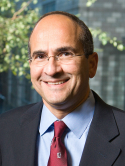Management of salivary fistulas after microvascular head and neck reconstruction Journal Article
| Authors: | Hyman, J.; Disa, J. J.; Cordiero, P. G.; Mehrara, B. J. |
| Article Title: | Management of salivary fistulas after microvascular head and neck reconstruction |
| Abstract: | Salivary fistulas after head and neck microvascular reconstruction are difficult problems whose treatment remains controversial. Although aggressive, early operative intervention has been suggested by some groups, we have found that many patients respond to conservative management with bedside debridement and aggressive local wound care. The purpose of this study was, therefore, to review our experience with the management of postoperative salivary fistulas. Methods: A retrospective review was performed and all patients who developed a salivary fistula after microvascular head and neck reconstruction over a 7-year period at Memorial Sloan-Kettering Cancer Center were identified and evaluated. Results: Six hundred thirty-seven patients underwent reconstruction during the study period. Of these, 35 patients developed a postoperative salivary fistula (5.4%). The majority of patients (81%) who developed fistulas shortly after the index procedure (<30 days) were successfully treated with conservative management. Similarly, 50% of late salivary fistulas (>30 days) responded to bedside debridement and wound care. There were no significant differences in the rate of total flap loss, carotid artery blowout, delay in onset of adjuvant radiation therapy (>6 weeks), or return to oral feeds between the conservative and operatively managed groups. Conclusions: Aggressive surgical intervention in early postoperative salivary fistulas is usually not necessary, although the treatment plan should be individualized. Bedside debridement and aggressive wound care are adequate in most cases of early salivary fistulas. This approach is not associated with an increased rate of complications. Copyright © 2006 by Lippincott Williams & Wilkins. |
| Keywords: | adolescent; adult; child; controlled study; school child; treatment outcome; aged; aged, 80 and over; middle aged; debridement; surgical technique; reconstructive surgical procedures; retrospective studies; major clinical study; review; head and neck surgery; microvascular surgery; postoperative period; microsurgery; algorithms; postoperative complication; statistical significance; head and neck neoplasms; conservative treatment; carotid artery; intermethod comparison; salivary gland disease; salivary gland; reconstruction; management; head and neck; x ray; wound care; skin flap; salivary fistula; salivary gland fistula |
| Journal Title: | Annals of Plastic Surgery |
| Volume: | 57 |
| Issue: | 3 |
| ISSN: | 0148-7043 |
| Publisher: | Lippincott Williams & Wilkins |
| Date Published: | 2006-09-01 |
| Start Page: | 270 |
| End Page: | 273 |
| Language: | English |
| DOI: | 10.1097/01.sap.0000221640.23003.07 |
| PUBMED: | 16929192 |
| PROVIDER: | scopus |
| DOI/URL: | |
| Notes: | --- - "Cited By (since 1996): 3" - "Export Date: 4 June 2012" - "CODEN: APCSD" - "Source: Scopus" |
Altmetric
Citation Impact
BMJ Impact Analytics
Related MSK Work






